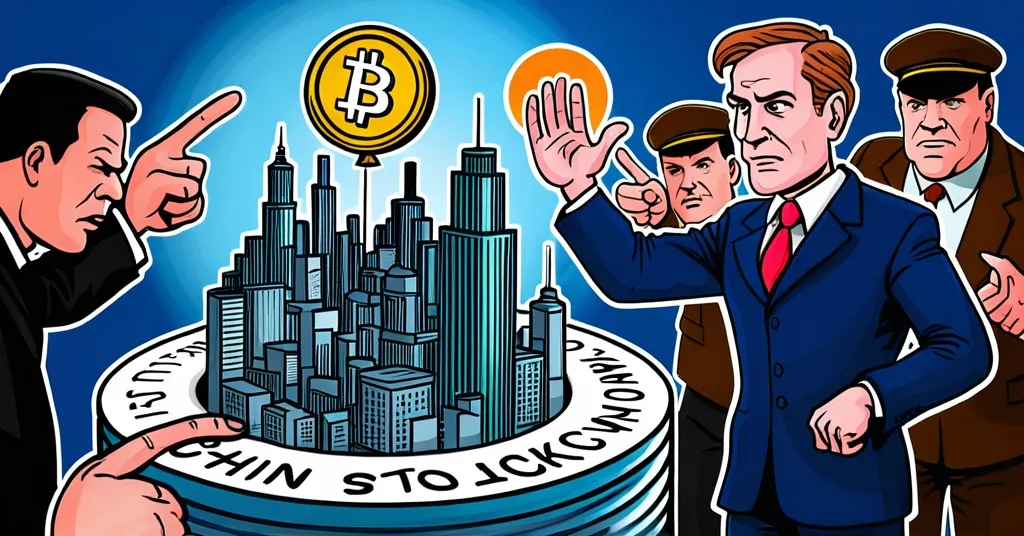Helius Labs CEO Defends Solana After Libra Token Crash: Envy and Scams Industry-Wide

Helius Labs CEO Mert Mumtaz Defends Solana Amid Libra Token Crash Fallout
The dramatic collapse of the Libra meme token on the Solana blockchain has fueled intense debate and accusations of scams. Helius Labs CEO Mert Mumtaz has fiercely defended Solana, arguing that the criticism it faces often stems from envy and that speculation and scams are industry-wide issues.
- Libra token crashes after endorsement retraction by President Javier Milei.
- Mert Mumtaz defends Solana against scam accusations.
- On-chain analysis reveals concentrated token supply and security concerns.
The Libra token, once boasting a staggering $4.5 billion market cap, plummeted to near worthlessness following a retraction of support by Argentina’s President Javier Milei. This incident has not only led to billions in losses for investors but also reignited the debate over Solana’s reputation as a hub for scams.
Mert Mumtaz, CEO of Helius Labs, took to social media to defend Solana, emphasizing that criticism from other blockchain communities often stems from jealousy over Solana’s high activity levels. “You are not upset that there are scams on Solana, you are upset that your chain has no activity,” Mumtaz asserted, challenging the narrative that Solana is uniquely plagued by scams. He further stated, “Crypto’s history is almost all speculation — L1 coins, ICOs, NFTs, L2 coins, and now memecoins,” highlighting the universal presence of speculation in the crypto ecosystem. L1 coins are those on the main blockchain network, while L2 coins are on secondary layers built on top of the main blockchain to improve scalability.
Mumtaz didn’t shy away from calling out Ethereum maxis, accusing them of hypocrisy for criticizing Solana while ignoring similar issues within their own ecosystem. He referenced Ethereum founder Vitalik Buterin, pointing out the inconsistency in their accusations against Solana. Defending Solana against scam accusations is like defending a rock star against groupie drama – it’s part of the territory.
The involvement of President Javier Milei in the Libra token saga adds another layer to the story. Milei had previously been linked to another alleged crypto scam, CoinX, in 2021, which led to litigation. His initial endorsement of Libra and subsequent retraction played a pivotal role in the token’s rise and fall. In a statement, Milei clarified, “I initially supported a supposed private enterprise with which I have no connection. After becoming aware of the details, I decided to discontinue spreading the word.” While Milei defends his actions as sharing information due to his enthusiasm for techno-optimism, the impact on the Libra token’s value was undeniable.
Analysis of blockchain transactions by companies like Bubblemaps and Chainalysis revealed concerning details about the Libra token. A staggering 82% of the token’s supply was concentrated in a few wallets, and developers withdrew $87 million from liquidity pools. Chainalysis also noted that Libra’s token creation and major supply addresses were controlled by a single private key, a significant security concern given the lack of multi-signature security, which involves multiple keys for added security.
The Libra token crash has broader implications for the crypto industry, underscoring the risks associated with celebrity endorsements and the critical need for thorough due diligence. It also highlights the ongoing presence of speculation and scams across various blockchain ecosystems, prompting discussions on security and regulatory measures. Speculation drives market dynamics, often leading to rapid price changes, while scams exploit these dynamics to deceive investors.
The incident reflects ongoing security concerns within blockchain ecosystems, such as the concentration of token supply and the use of less secure private keys. Moreover, the competitive and sometimes contentious dynamics among different blockchain communities, like those between Solana and Ethereum, show that criticisms can be influenced by rivalry rather than objective analysis.
Despite the crash, some nuances are worth noting. In subsequent interviews, President Milei clarified that his involvement was more about sharing information due to his enthusiasm for techno-optimism, rather than active promotion. He also disputed the number of affected investors, claiming it was closer to 5,000 sophisticated traders aware of the risks. Additionally, reports indicate that the actual amount withdrawn by developers was $107 million, including $57.6 million in USDC and $49.7 million in SOL.
The Libra token’s current trading price of $0.2511, down nearly 95% from its peak, reflects ongoing market skepticism. Reports of a whale selling 659,000 Libra tokens at a significant loss ($2.1 million) further illustrate the panic and sell-off that followed Milei’s retraction. Discussions on platforms like Reddit have been rife with analysis and reactions to the crash.
As the crypto landscape evolves, incidents like the Libra token crash serve as stark reminders of the industry’s challenges and the need for robust security measures and regulatory oversight. Yet, as Mert Mumtaz passionately argues, the problems Solana faces are not unique to it but are part of a broader industry narrative. Solana’s future might involve increased scrutiny and potential regulatory responses to prevent similar incidents, but its high activity levels and innovative projects continue to drive interest and development in the blockchain space.
Key Questions and Takeaways
What was the impact of the Libra token crash on the Solana ecosystem?
The Libra token crash led to significant financial losses for investors and triggered accusations of Solana being a hub for scams. However, Mert Mumtaz argued that such incidents are not unique to Solana and are a part of the broader crypto landscape.
How did Mert Mumtaz respond to the criticisms of Solana?
Mumtaz defended Solana by asserting that critics are often from less active blockchains and that speculation and scams are widespread across all crypto ecosystems, not just Solana.
What role did Javier Milei play in the Libra token incident?
President Javier Milei initially endorsed the Libra token, which led to its rapid rise in market cap. His subsequent retraction of the endorsement caused the token’s value to plummet, highlighting the impact of celebrity endorsements in crypto.
What are the broader implications of the Libra token crash for the crypto industry?
The Libra token crash underscores the risks associated with celebrity endorsements and the need for thorough due diligence. It also highlights the ongoing presence of speculation and scams across various blockchain ecosystems, prompting discussions on security and regulatory measures.
How does the incident reflect on the state of blockchain security and community dynamics?
The incident reveals ongoing security concerns within blockchain ecosystems, such as the concentration of token supply and the use of less secure private keys. It also reflects the competitive and sometimes contentious dynamics among different blockchain communities, where criticisms can be influenced by rivalry rather than objective analysis.



